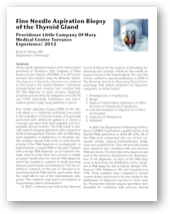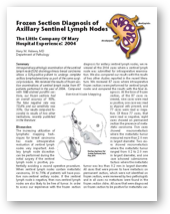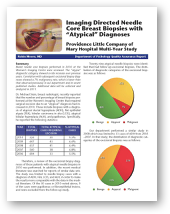Quality Improvement
APMG continually monitors the performance of the department, on a hospital-specific basis. The results are presented at appropriate committees, departments, and the medical executive committee. Much of the quality improvement and assessment reports are standard fare, typical of the reports required by the various regulatory agencies. But in addition, APMG is committed to an in-depth view of quality. This is typified by three recent reports, summarized below.



Fine Needle Aspiration Biopsy of the Thyroid Gland
All fine needle aspiration biopsies of the thyroid gland performed at Providence Little Company of Mary Medical Center Torrance (PLCMMC-T) in 2012 were reviewed and classified using the Bethesda System. The frequency of diagnostic categories was compared to that found in the medical literature. Subsequent thyroidectomies were reviewed and correlated with the FNA diagnoses to assess accuracy. Diagnostic sensitivity and specificity for malignancy were 94.7% and 100% respectively. Performance was benchmarked against a large study published in Cancer.
Frozen Section Diagnosis of Axillary Sentinel Lymph Nodes
Intraoperative pathologic examination of the sentinel lymph node (SLN) draining primary breast carcinoma allows a SLN-positive patient to undergo complete axillary lymphadenectomy as part of the same surgical procedure. We reviewed the results of frozen section examinations of sentinel lymph nodes from 87 patients performed in the year of 2004. Compared with H&E-stained paraffin sections, our frozen sections had an overall accuracy of 90%. The false negative rate was 10.4% and our sensitivity was 55%. Our results compare favorably to results of other institutions, as published in the literature.
Imaging Directed Needle Core Biopsies with “Atypical” Diagnoses
Breast needle core biopsies performed in 2010 at the Woman’s Imaging Center were reviewed. The “atypia” diagnostic category showed a rate increase over previous years. Correlation with subsequent excisional biopsy diagnoses showed a 7% malignancy rate, which is lower than that observed previously in our department and in recent published studies.

